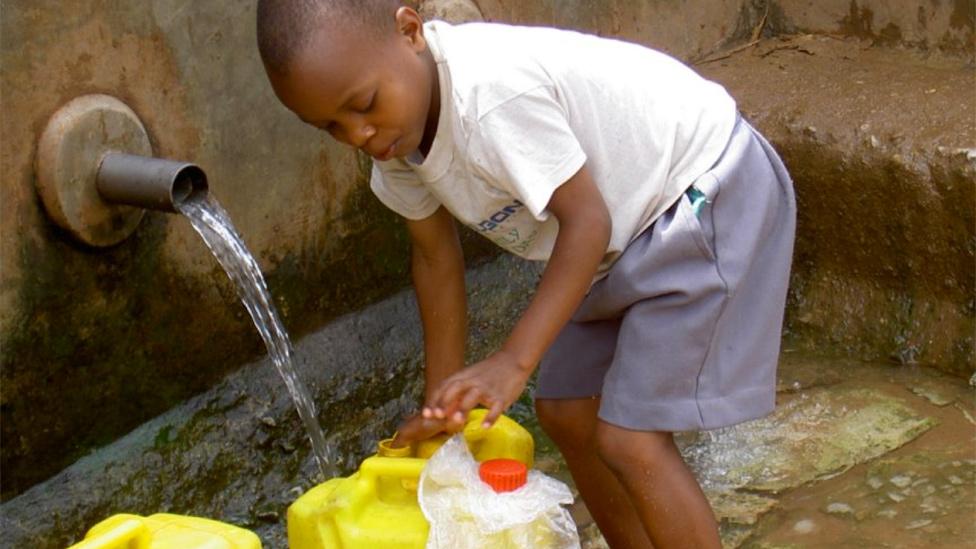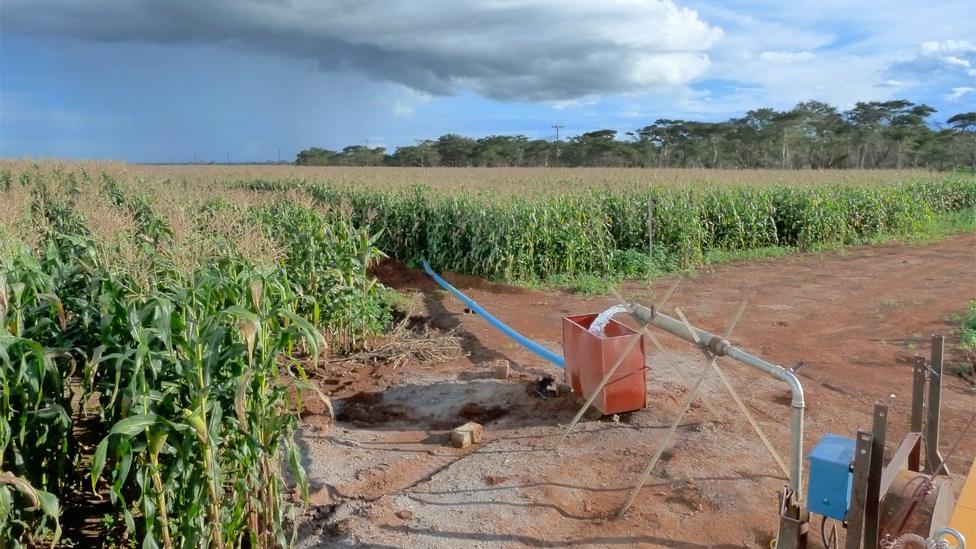'Fossil' groundwater's modern secret
- Published
Jim Kirchner: "Fossil groundwater fell as rain when mastodons still roamed the Earth"
The world's oldest and deepest waters are not immune from contamination, warn scientists.
It had been assumed that "fossil" reserves found hundreds of metres underground would be largely untouched by modern water sources.
But sampling from some 10,000 wells shows this not to be the case.
The new study reveals that about half of the deep groundwater has had contact with rains and snows that fell in the past 60 years.
And that means these ancient aquifers are also at some risk from pollution if waste and land management practices are defective.
It is an issue of significance because fossil waters are an important resource, providing drinking supplies and irrigation for billions of people across the globe.
The scientists presented their findings here in Vienna at the European Geosciences Union General Assembly. They have also published a report in the journal Nature Geoscience, external.

We will become increasingly dependent on deeper, older groundwater if shallower, younger groundwater becomes depleted
The team tested the deep waters for the presence of two radioactive elements.
The first was carbon-14 which occurs naturally in the environment and is pulled out of the air by rain and snow. This precipitation will eventually percolate into deep soil pore-spaces and rock fractures.
Because carbon-14 decays relatively slowly, a very low count in water will indicate great antiquity. Scientists will use the term fossil in this context to mean water that last touched the atmosphere more than about 10,000 years ago.
The second radioisotope to be checked was tritium, a heavy form of hydrogen which, in contrast, decays very rapidly. It was put in the atmosphere by A-bomb tests in the 1950s/1960s, so its presence is a sign of water's youth.
"What we've learnt from these two radioisotopes is two things," explained team-member Jim Kirchner from the Swiss Federal Institute of Technology in Zurich.
"One is that more than half of groundwater under our feet is fossil groundwater. The second important finding is that of this fossil groundwater, the water that comes out of those wells also contains a component of modern groundwater in at least half of cases.
"That means the water we are pumping from these deep wells, from what we think are ancient aquifers, also can potentially contain modern contaminants, either because of mixing within the well itself as the water is brought up, or because of mixing within the aquifer," he told BBC News.

A deep, handpump well supplying freshwater in the Sundarbans of coastal Bangladesh
The study's lead author, Scott Jasechko of the University of Calgary, Canada, added: "We're using the analogy of grandkids visiting their grandparents.
"Imagine fossil groundwaters are the grandparents and that younger groundwaters are the grandkids.
"We're finding that groundwater grandkids often visit groundwater grandparents deep underground, and, unfortunately, sometimes these grandkids have the flu.
"These young groundwaters may carry contaminants down with them, impacting deep groundwater once considered immune to modern contamination."
The scientists say the issue of pollution also now needs to be considered alongside the oft-discussed concern over the sustainable use of groundwater.
The deeply buried ancient water is what it is because of the time taken to build up, and hydrologists have long warned that it should really be viewed as a kind of "credit card", to be drawn on principally only in periods of major water stress, such as during a severe drought.
This case will continue to be made, but the new study now adds in the extra matter of contamination risk.

Groundwater supports about 40% of the world's irrigated agriculture
Jonathan.Amos-INTERNET@bbc.co.uk, external and follow me on Twitter: @BBCAmos, external